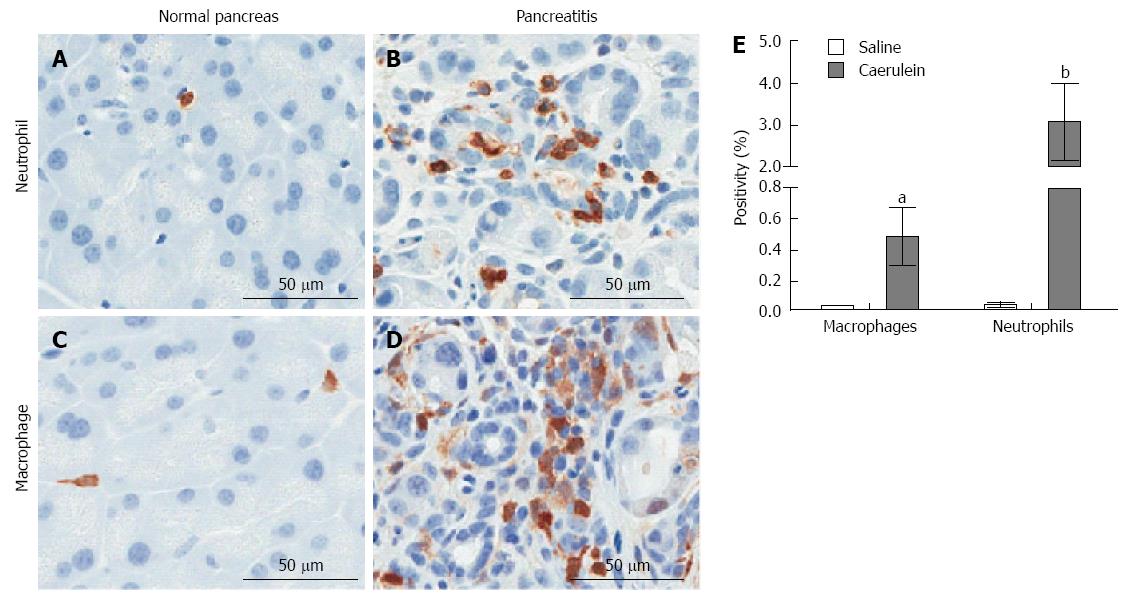Copyright
©2014 Baishideng Publishing Group Inc.
World J Gastroenterol. Aug 28, 2014; 20(32): 11160-11181
Published online Aug 28, 2014. doi: 10.3748/wjg.v20.i32.11160
Published online Aug 28, 2014. doi: 10.3748/wjg.v20.i32.11160
Figure 4 Induction of innate immune response in a mouse model of chronic pancreatitis.
Mice were injected intraperatoneally with 250 μg/kg caerulein or saline twice daily, six days per week for two weeks (Mayo Clinic IACUC protocol A48510). The pancreas was isolated 24 h following the last injection and analyzed immunohistochemically for the presence of neutrophils (Ly6B.2: AbSerotec) or macrophages (Mac-2; Cedarlane Diagnostics). A: Neutrophil infiltration in saline-treated mice; B: Neutrophil infiltration in caerulein-treated mice; C: Macrophage infiltration in saline-treated mice; D: Macrophage infiltration in cearulein-treated mice; E: Stained slides were imaged using ScanScope XT (Aperio, Vista, California) and staining was quantified using the Aperio ImageScope reader. aP < 0.05, bP < 0.01 vs corresponding saline treated control. Mean ± SD is plotted for each group of n≥ 5 mice.
- Citation: Inman KS, Francis AA, Murray NR. Complex role for the immune system in initiation and progression of pancreatic cancer. World J Gastroenterol 2014; 20(32): 11160-11181
- URL: https://www.wjgnet.com/1007-9327/full/v20/i32/11160.htm
- DOI: https://dx.doi.org/10.3748/wjg.v20.i32.11160









